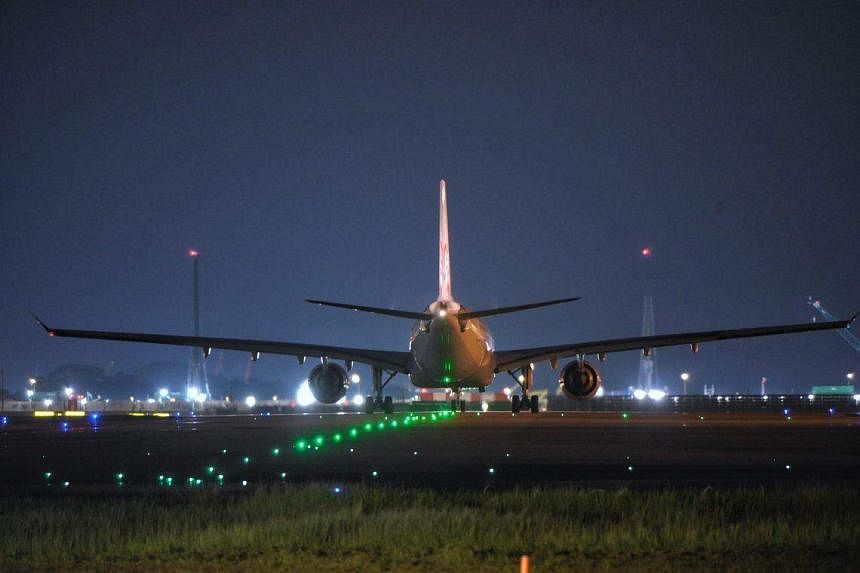SINGAPORE - Twice a week, a crew of 60 people and 20 vehicles rumble onto Changi Airport’s Runway 1 in the dead of the night. The mission: to comb 4km of runway to make sure it is fit for aircraft take-offs and landings.
The frequency of maintenance depends on how heavily a runway is used. Only one runway is closed for maintenance, so there is still one runway in operation.
The maintenance team typically has between 1am and 5am to do the work, which includes fixing potholes, scraping out rubber deposits left by aircraft, securing fixtures like lighting and signage that can come loose, and trimming the grass on the side of the runway.
The first plane usually lines up to use the reopened runway within a few minutes after the last maintenance vehicles leave.
Changi Airport handled 298,000 flights in the first 11 months of 2023, with the planes using either Runway 1 or 3.
Runway 2 was reopened on Dec 1, 2023, after it was closed in December 2020 for infrastructure work, taking over from Runway 3.
Eventually, all three runways will be operational as part of the airport’s expansion plan, which includes building Terminal 5 to increase overall capacity.
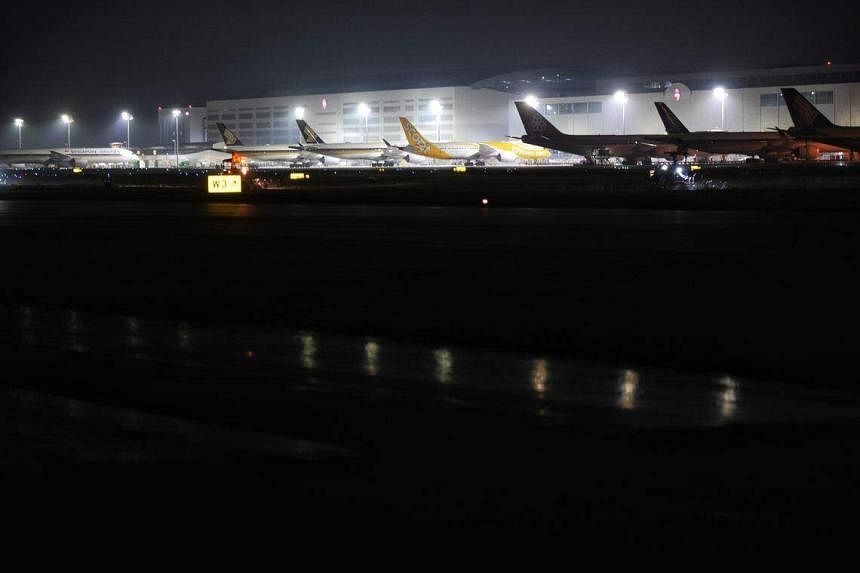
The Straits Times followed Changi’s maintenance team to Runway 1, which runs parallel to the Terminal 3 building, to find out how the runways are kept in good shape.
Getting to the runway access point involves taking a minibus on a private road that runs along the airport’s perimeter. Being a controlled area, security is tight and runway access is coordinated with airport traffic control.
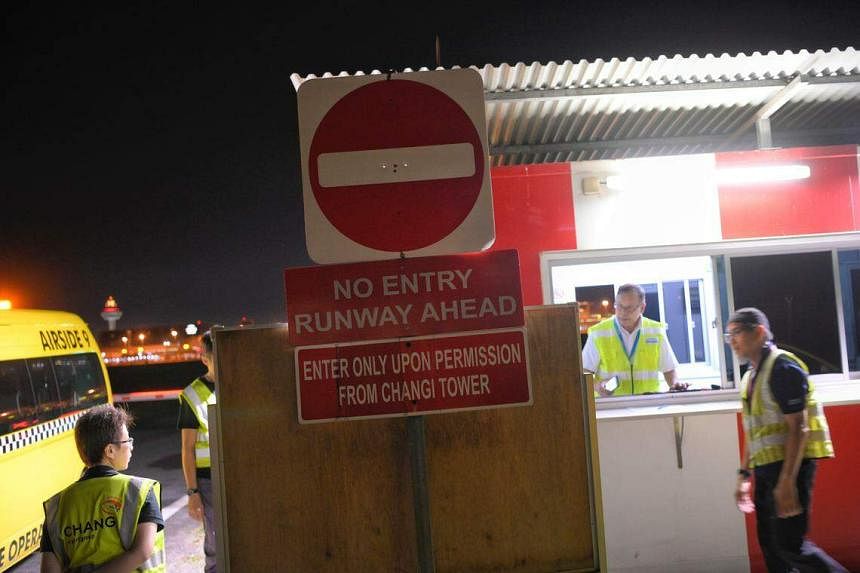
In addition to exchanging passes at the airport’s security office, those entering the runway are issued location trackers at the office beside the access point. This is followed by a five-minute safety briefing before work begins.
As the other teams, like the 12 grass cutters, go about their tasks on different sections of the runway, a friction tester takes up position on one end.
The tester is a modified Saab 9-5 SportCombi – an old workhorse that is due to be replaced by a new Volkswagen Transporter van. The Saab’s odometer shows that it has covered 175,157km, a comparable mileage with what a private car would clock on public roads after more than 10 years. In the 1980s, the airport used a Lamborghini Countach, which is a low-slung supercar, to do this work.
The Saab has a 550-litre water tank mounted where the rear seats would normally be. As the car is zooming down the runway, reaching speeds of between 95kmh and 97kmh, it sprays a thin film of water onto the runway surface.
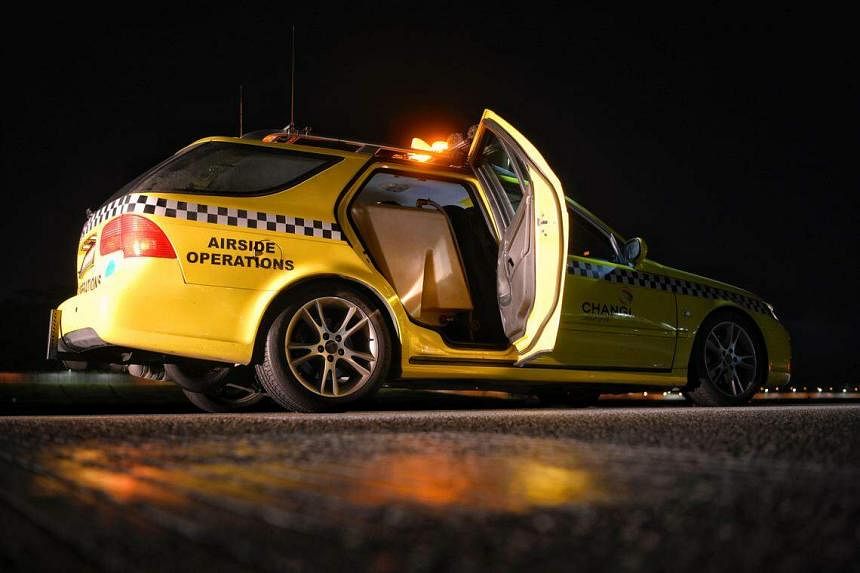
A test wheel, which extends from the boot floor of the vehicle to make contact with the runway, is used to measure the grip level on the surface.
Each test lasts between 10 and 15 minutes.
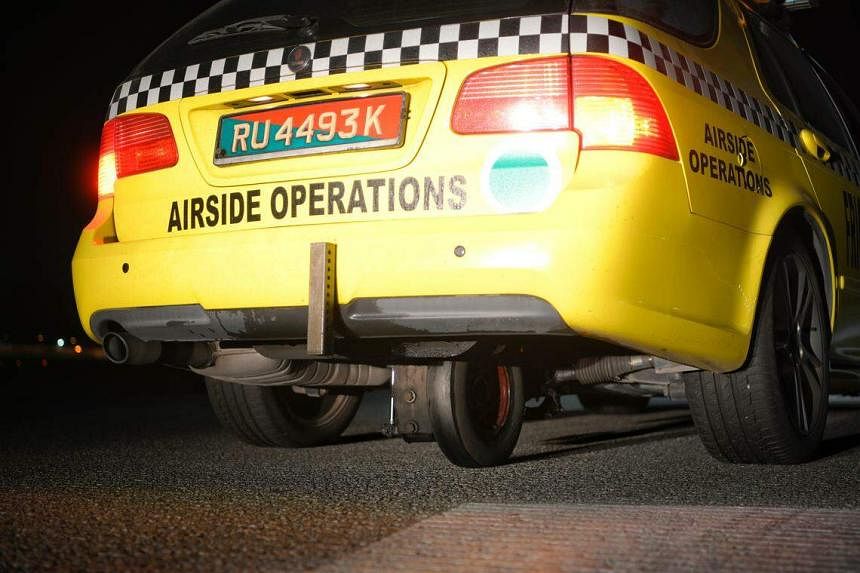
From one end of the 4km runway, the Saab has 300m to get up to the target speed. The driver has to start braking by 3.6km, or there may be insufficient road space to stop safely.
There are not many landmarks to guide the driver, so it is a challenge to keep the vehicle on the correct trajectory and know exactly when to start decelerating.
Although the runway is 60m wide, the friction tester is focused on the middle portion nearer to the centre line, because this is where aircraft tyres touch the runway.
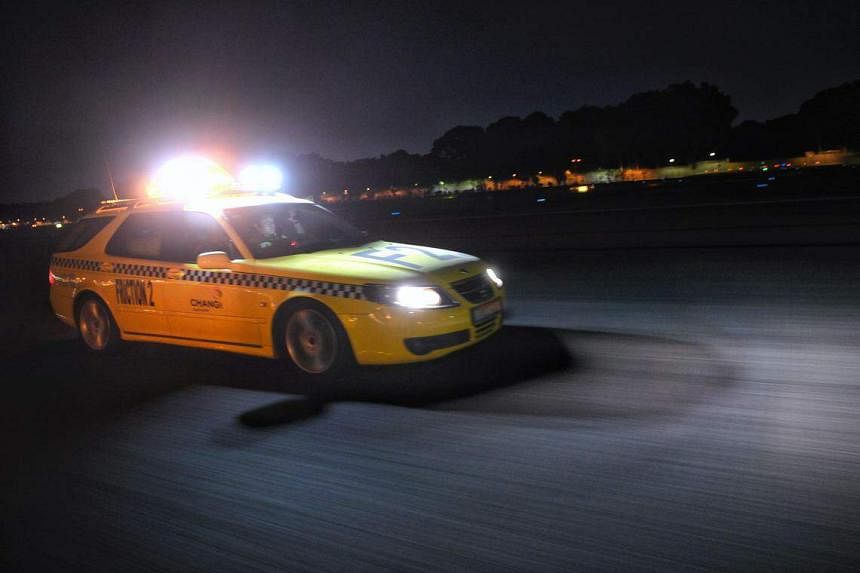
The friction tester checks a portion of the width of the runway at each maintenance session. It takes four sessions to complete the tests.
In addition to the friction tester assessing grip levels, teams in inspection rovers, which are basically minibuses, do visual checks of the runway.
There are three teams charged with repairing potholes while another team repaints any part of the centre line on the runway that has been blackened by aircraft tyres. Pilots use the centre line to guide the aircraft’s approach.
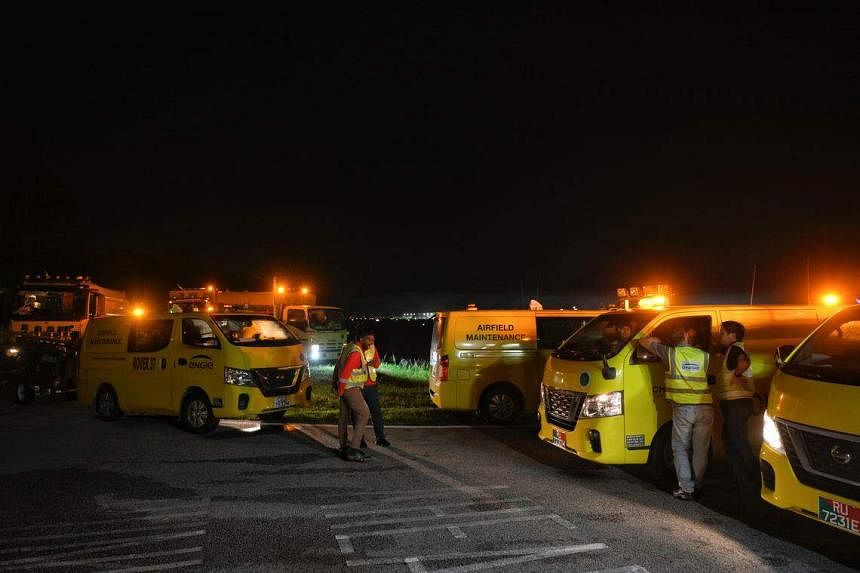
With frequent take-offs and landings, a considerable amount of rubber deposits is left on the runway by aircraft tyres. If allowed to build up, these will reduce friction and pose a safety hazard to planes that are landing.
This is where the rubber removal machine – a six-wheel truck with two rotating discs that carry high-pressure jet nozzles – comes in.
Compared with the speedy friction tester, the truck moves at a more leisurely pace of between 10kmh and 15kmh.
Its nozzles can send out jets of water at a pressure as high as 35,000 psi – enough to strip the paint markings on the runway.
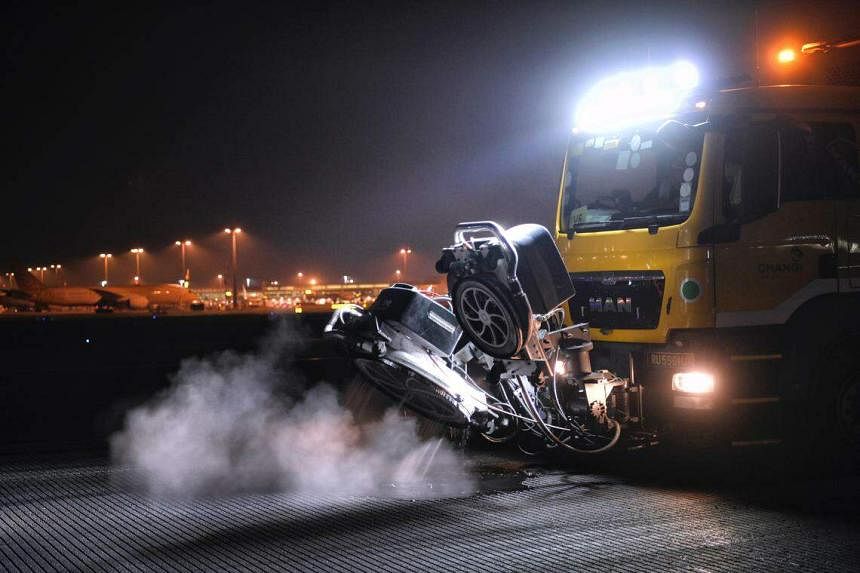
Mr Jamal Juki, 63, manager for airfield systems and engineering management who oversees the work of the rubber removal machine, said the paint markings need to be stripped if they become too thick after repainting, as the thickened surface can compromise the level of grip.
In between coordinating with the other teams working on the runway over his mobile phone, the long-time employee, who has been with Changi Airport for more than 40 years, explained that the water pressure is otherwise set at between 21,000 and 25,000 psi to loosen rubber deposited by plane tyres.
The dislodged materials are then sucked into the waste tank on the back of the machine.
Rounding up the routine runway maintenance is the runway sweeper. There are two runway sweepers on duty.
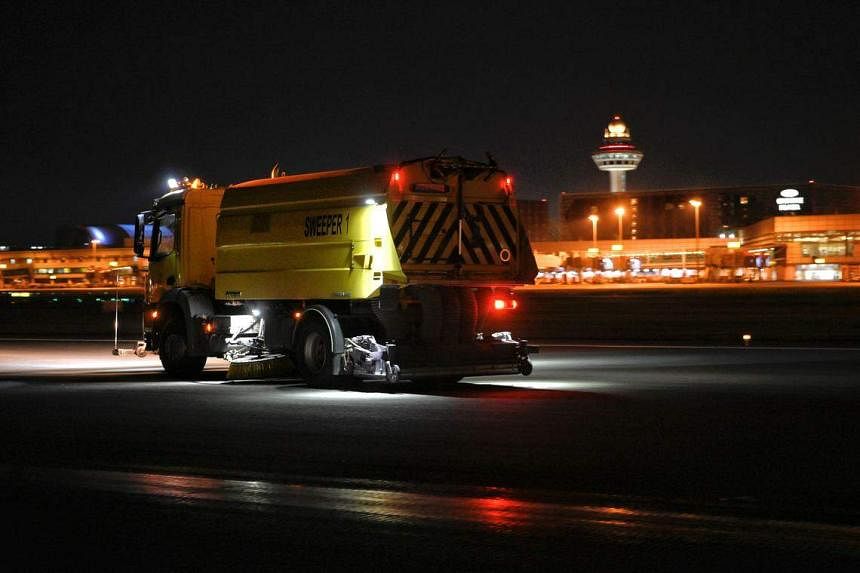
The truck looks similar to a typical road sweeper except for the large bar that is mounted in front of the bumper, which is magnetised to pick up metal objects left on the runway, such as small bolts.
Under its belly, between the wheel axles, are rotating brushes to sweep the floor and a suction hood to suck up the debris. Travelling at around 25kmh, it takes around 90 minutes to finish the planned work for each maintenance session.
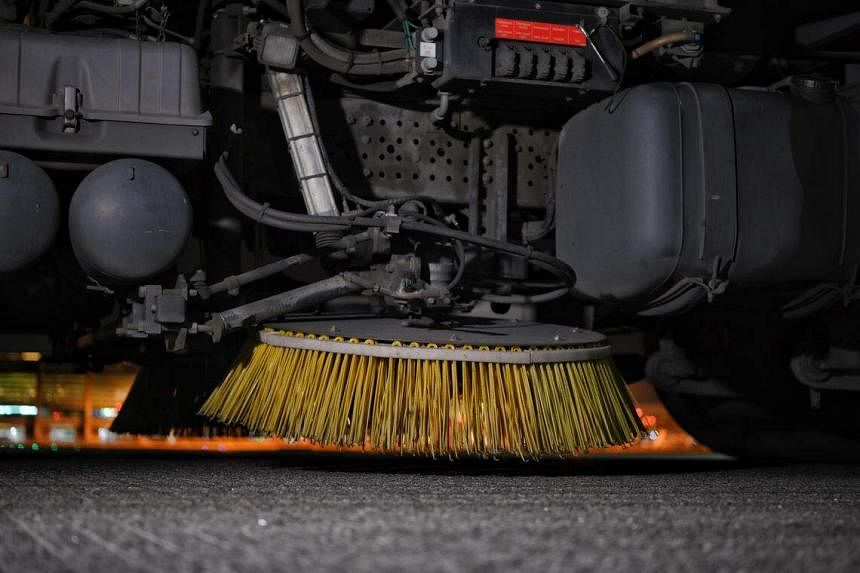
The sweepers are usually the last machines to leave the runway, so as to give the surface a final scrub after the other teams have completed their tasks.
When that is done and everyone is safely out of the area, the runway is then ready to receive the first flights of the day.
